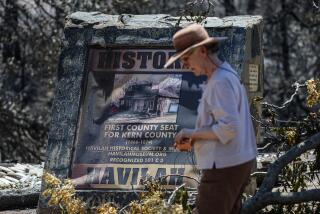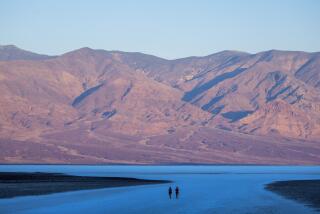Saddle up and head out to Butch Cassidy territory
It is easiest to see the wild, isolated Robbers Roost country where Butch often hid out from Angel Point, overlooking the Dirty Devil River. A rough dirt loop road leads here from Utah 95 about five miles south of Hanksville. There are occasional signposts and a small parking lot at the trail head. The hike to the river is about three miles; the views of the Roost’s deeply incised canyons get better all the way. In low-water conditions, hikers can ford the Dirty Devil and continue to Angel Cove Spring and, finally, to Biddlecome-Ekker Ranch. For information, stop in at the Bureau of Land Management office in Hanksville, (435) 542-3461.
Beaver, the quiet county seat on Interstate 15 about 100 miles north of St. George, is where Robert LeRoy Parker, a.k.a. Butch Cassidy, was born April 13, 1866, three years before the completion of the nation’s first transcontinental railroad. When he was 13, the family moved across 11,331-foot Circleville Mountain to a ranch in the Sevier River Valley.
Today, there’s little left of Butch in Beaver besides a much transformed, unmarked pink stone house where he is thought to have lived and a Best Western hotel named for him. But while you’re there, don’t miss the Cache Valley Cheese factory and store, 330 West 300 South, (435) 438-2421, known for cheese curds that squeak when you bite into them. As they squeak, remember that young Bob Parker worked for a time at a dairy before spurring his horse onto the Outlaw Trail.
Parowan, also on I-15, about 30 miles south of Beaver, was the first Mormon colony south of Provo, settled in the early 1850s at the behest of Latter-day Saints leader Brigham Young. Many pioneers are buried in its rock-walled cemetery under the mountains on the west side of town, as is Daniel Parker, Butch’s younger brother. Dan followed Butch on the Outlaw Trail but was arrested during a heist and sent to the Detroit House of Corrections, then given a pardon in 1897. He moved to Parowan, raised a family, is said to have lived a law-abiding life, died in 1942 and was buried with family members around him. There’s an empty space to his right, which has led some folks to think that’s where Dan’s older brother Butch went down for the big sleep.
Red Canyon Trail Rides, Bryce Canyon Pines Motel, Utah 12, (435) 834-5441, has guided, daylong horseback rides deep into Red Canyon to visit the remains of a stone hide-out said to have been used by Butch. The $100 fee includes a box lunch. The rides are offered from early spring to late October. You need some riding experience for the 14-mile trek through rough country.
Silver Reef sprang up around 1875, after silver was discovered in the red sandstone plateaus about 20 miles north of St. George. Soon, there were six mills, producing about $1-million worth of silver a year. Butch’s father, Maximillian, worked in the mines when the family hit hard times, and some have claimed the bandit didn’t die in Bolivia (as suggested by the 1969 movie) but lived out his twilight years peacefully in Silver Reef, occasionally visited by the Sundance Kid and the Kid’s paramour, Etta Place.
Silver Reef was a ghost town by about 1900 and is now being swallowed up by residential subdivisions. But the old Wells Fargo Building has lately been restored as the Silver Reef Museum & Art Gallery; next door, there’s the Cosmopolitan Restaurant, (435) 879-6862, and down the hill, the old Catholic and Protestant cemeteries are being kept up by the local Lions Club.
The Western Mining & Railroad Museum, 296 S. Main St., Helper, (435) 472-3009, is devoted to the history of a small coal-mining town on the railway line to Salt Lake City. Just north, there’s a mountain pass called Castle Gate, where Butch and company pulled off a masterfully planned payroll heist that netted about $7,000 in gold. The bandits cut the telegraph lines to Helper on their way down into the valley and were initially chased by Pleasant Valley Coal Co. paymaster E.L. Carpenter in a locomotive detached from the rest of its train.
The story of the bank robbery is told in a display at the museum in Helper that includes the original staircase from the paymaster’s office at Castle Gate where Butch pointed a gun at Carpenter and told him to drop the bags of gold.
More to Read
Sign up for The Wild
We’ll help you find the best places to hike, bike and run, as well as the perfect silent spots for meditation and yoga.
You may occasionally receive promotional content from the Los Angeles Times.






